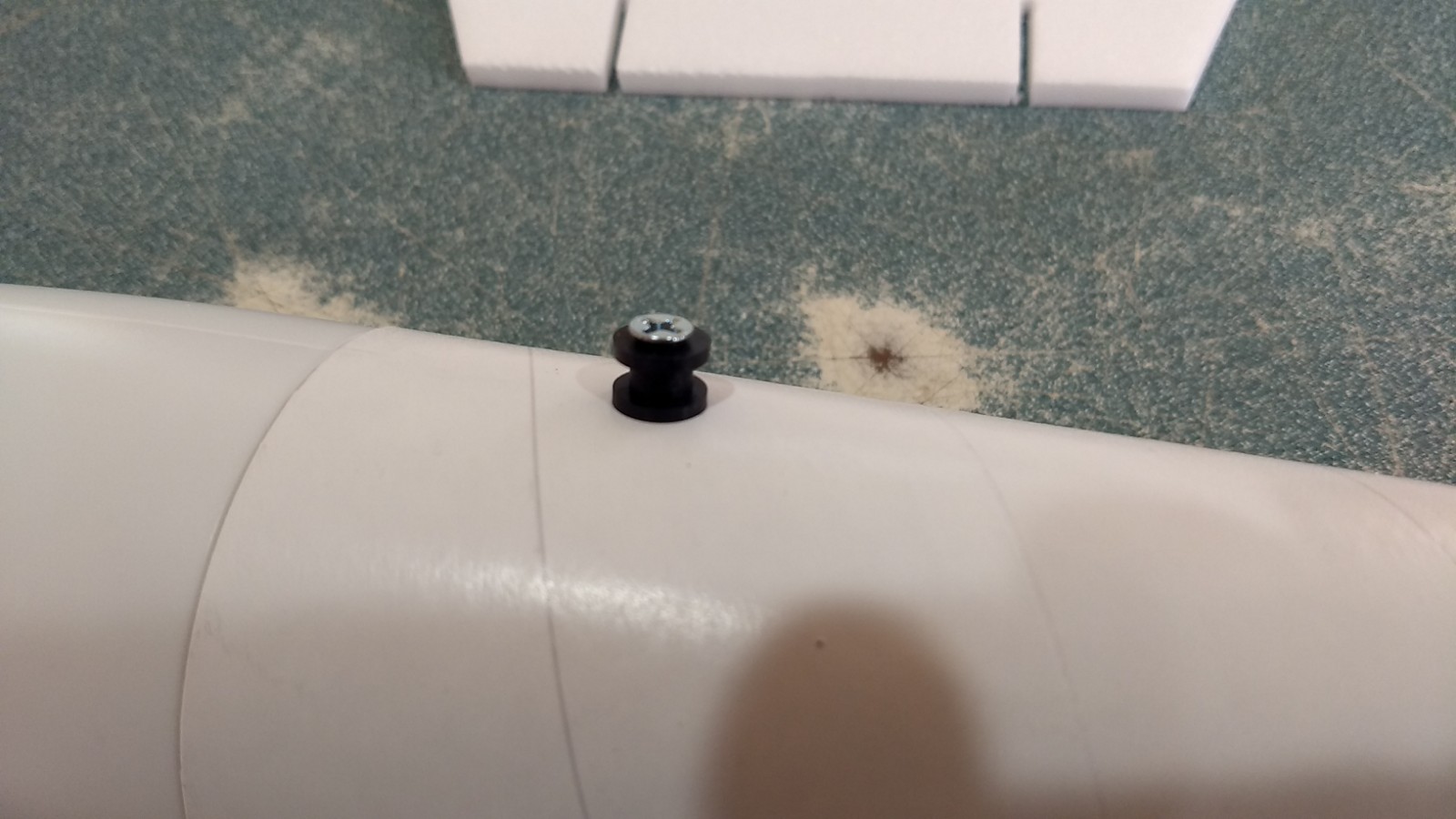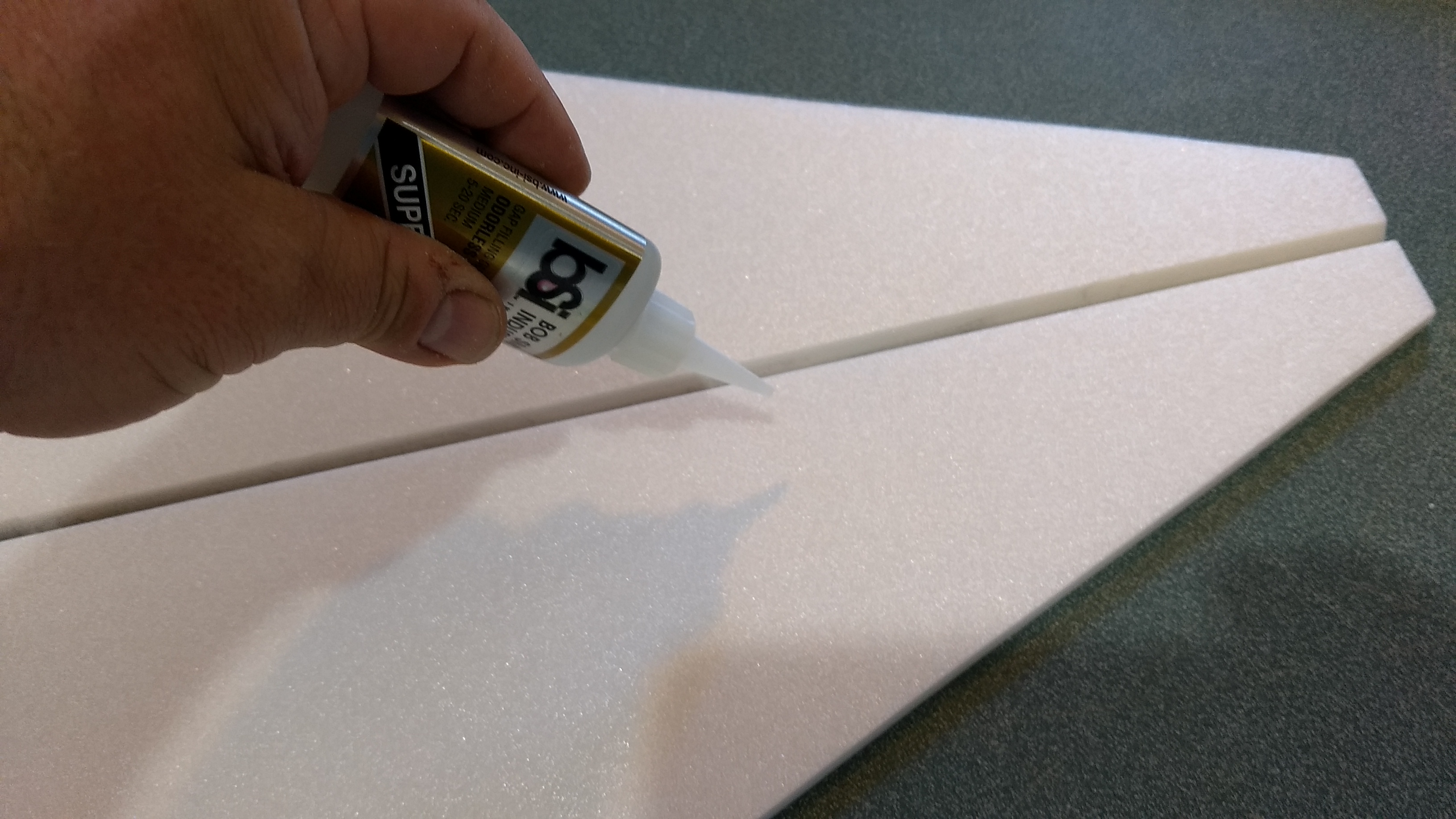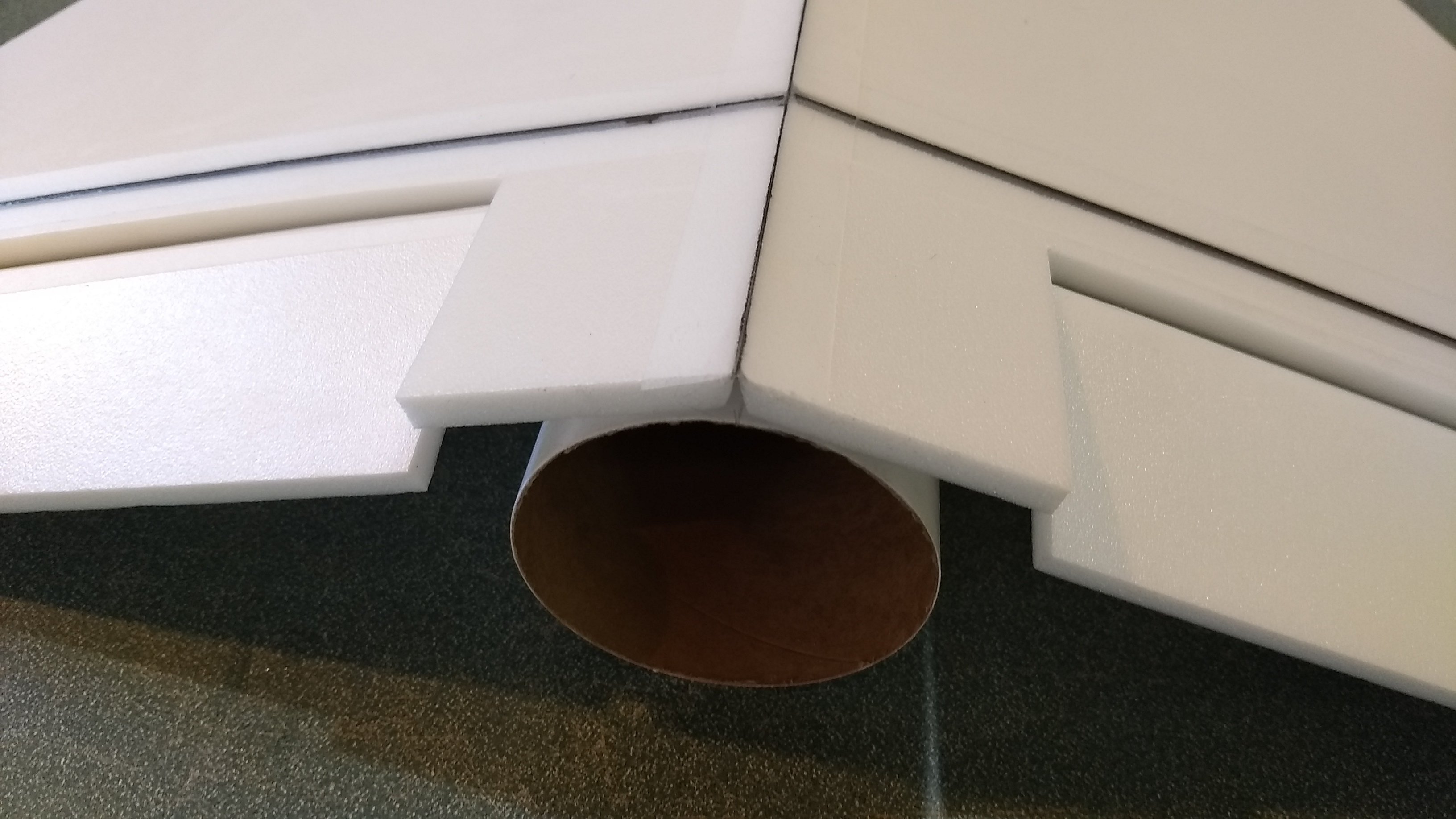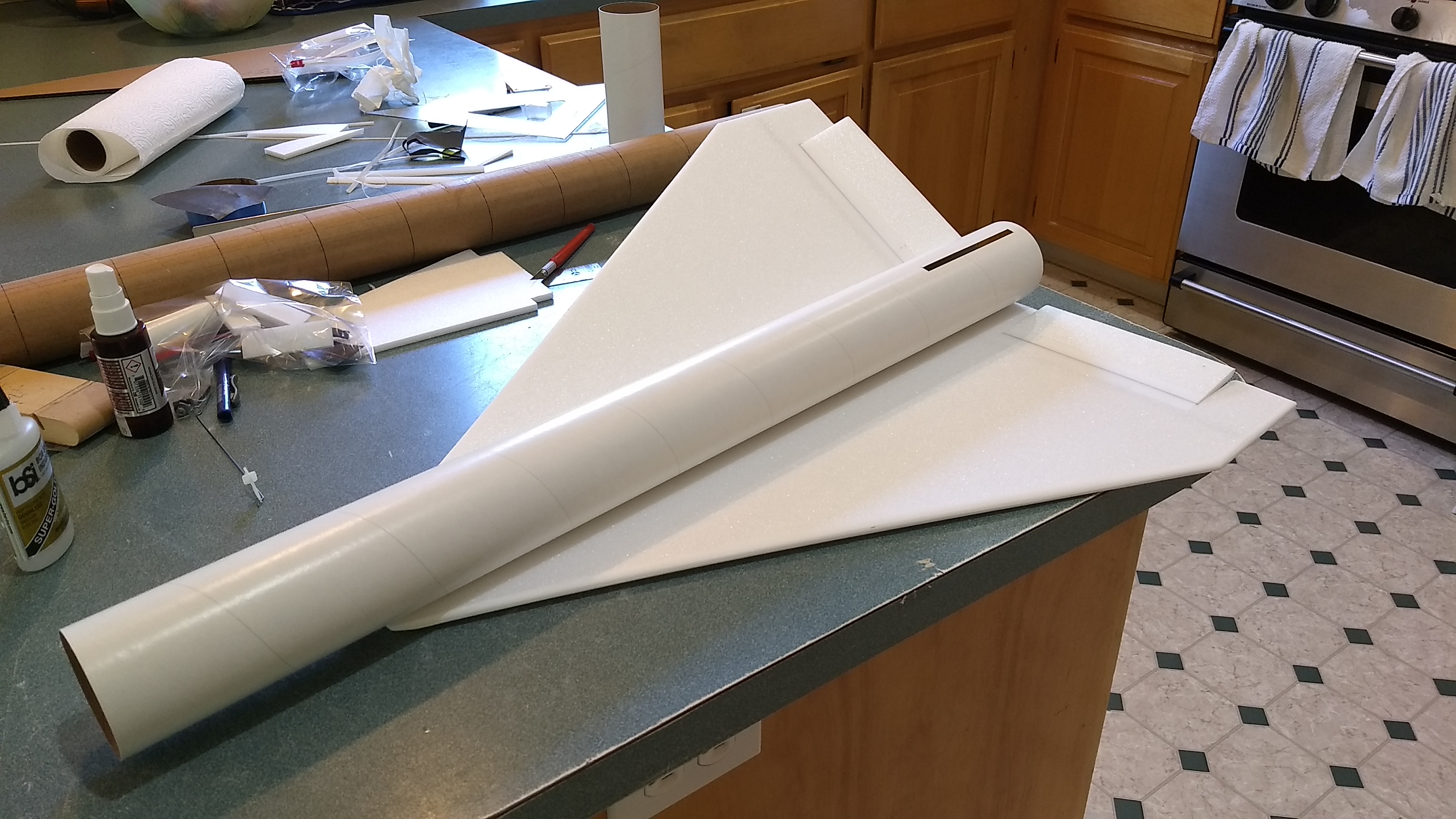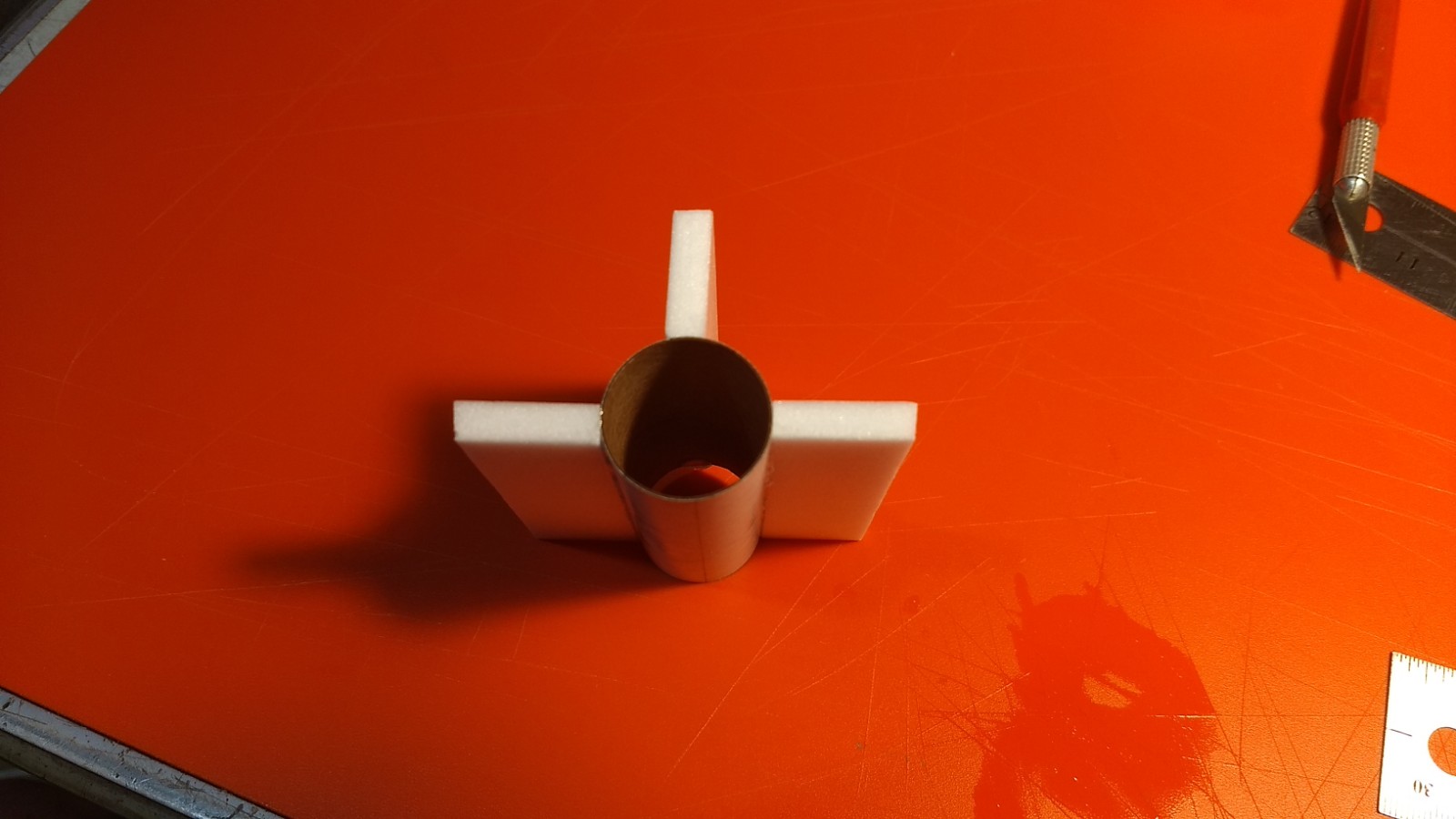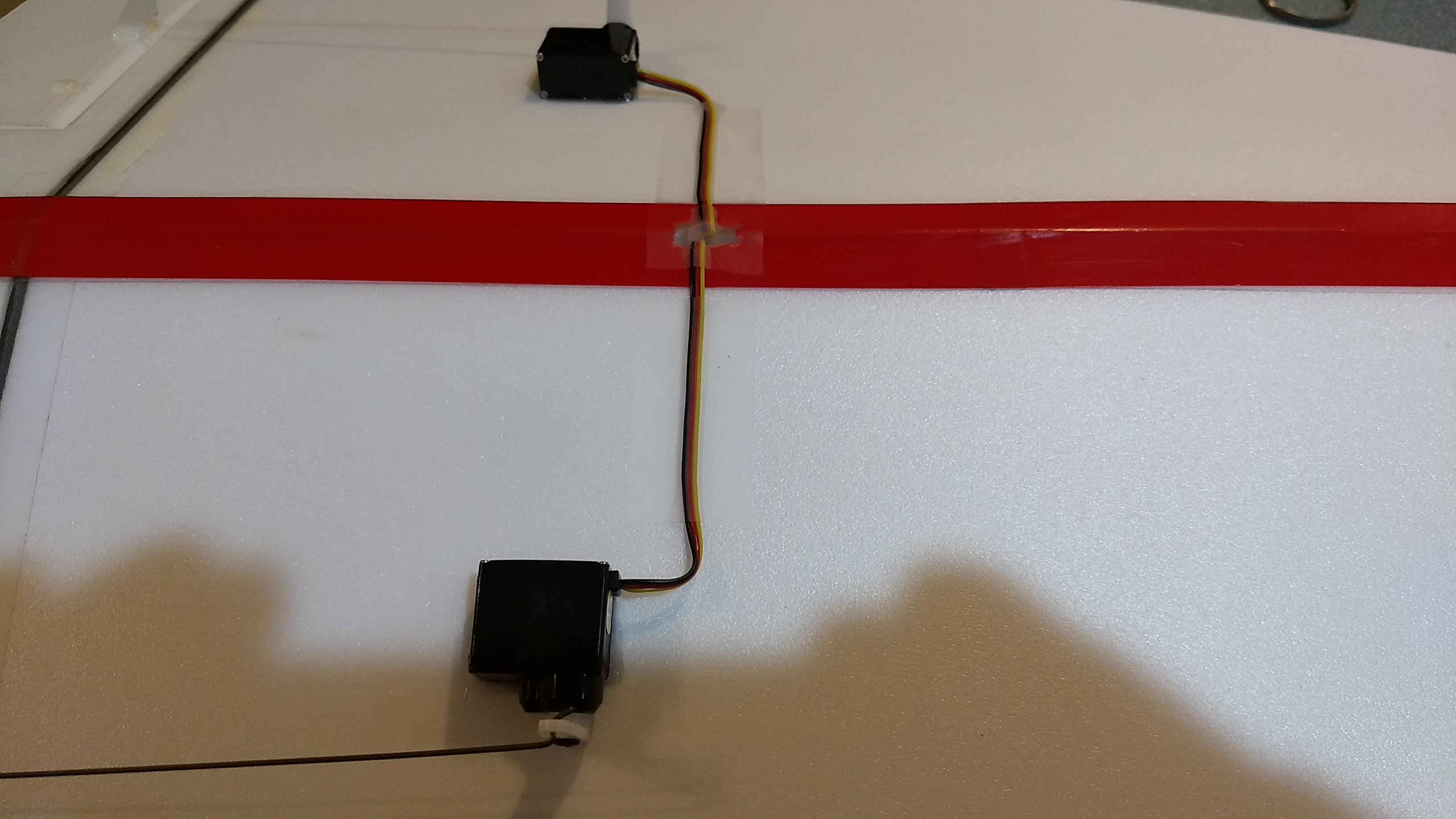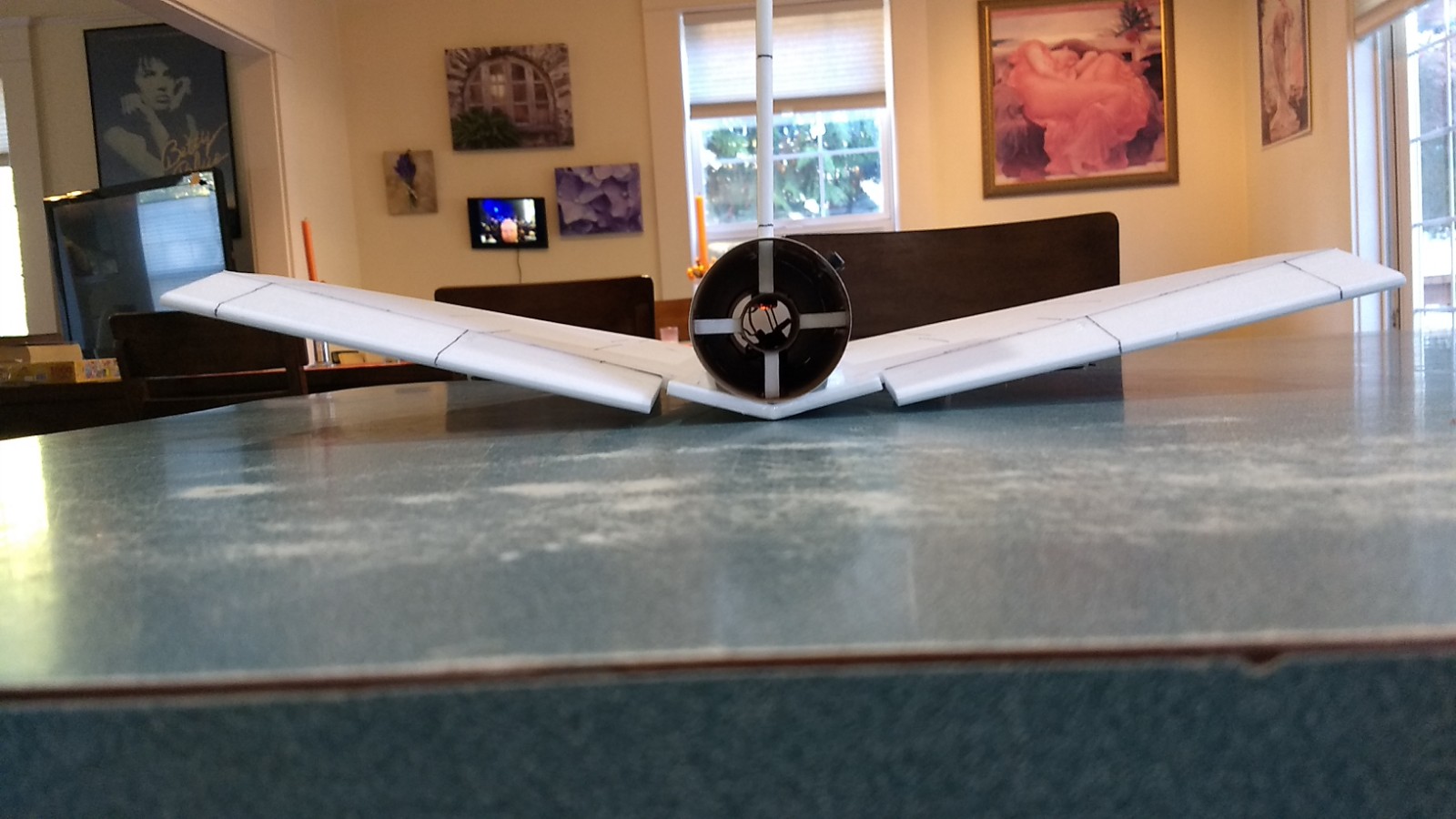The Orbital Transporter SSTO RC Rocket glider kit is an upscale of the piggyback shuttle from the Orbital Transport kit from the 1960’s/70’s. Unlike the original which was unpowered, this model uses advanced propellent to reach orbit in a single stage without booster or any ejecting pod. It comes with a plastic nose cone, 2.6″ white tubing for the body, 6mm depron wing and tail surface. Surfaces are pre-hinged, spars are pre-installed, rail button holes are pre-cut. Construction is very simple and takes about an hour and a half. Length 31″, wingspan 20″, weight 10 oz rtf. For E-6 motors only.
CG location for rocket flight: 12.5” forward of the rear end of the body tube.
Please refer to the General information for all kits tab above, then read these instructions completely before starting assembly. High quality cut vinyl decals available Make sure to specify the large set for this kit HERE.
Unpacking your kit:
The kits are packed to protect them in shipping, but the contents are fragile so unpack carefully. Carefully cut the tape holding the tubes in the box, then unwrap/lightly cut the plastic wrap to free the tubes, the spar may be packed in the tubes and the baggie with the little parts and nose cone will be in the tubes as well. Carefully cut the tape holding the cardboard wing protector in the box and carefully remove it, don’t pull hard or bend it. Then carefully cut the tape holding the cardboard top piece to the bottom. There may be some sticky tape holding the cardboard to the bottom cardboard piece, carefully peel it being sure not to bend anything. Once the top cardboard is free you can see the foam wing/tail parts, there are little fragile pieces in here, so unwrap carefully. It may be best to use an exacto to lightly cut the plastic wrap and carefully remove it without cutting into the foam. Make sure everything is free before you remove the pieces to avoid breaking anything. Kits contain one or two scrap pieces for repairs if you damage anything in construction or flight, just cut and patch in a spare piece of the foam if needed using foam safe CA+.
Welcome to the world of rocket boosted radio control gliders. This is not a model for a novice RC pilot, but anyone who is comfortable with RC flying of a medium speed model should be fine. Read through the instructions, look at the photos and be sure you understand the step before committing to cutting or glue.
Identify all pieces, the kit should contain:
1 wing taped together
1 Nose Cone
1 vertical stabilizer
2 wing reinforcing strips
2 control horns/Pushrods
2 Body Tubes
Motor mount
3 13/16″ x 2.5″ wide strips to center the motor tube
Velcro(for battery and rx/bec attachment)
2 Rail buttons with t nuts/screws
Blenderm Tape
Lead weight
Notes before starting:
Foam safe CA+(Bob smith super gold + is good) is the only glue recommended for construction. You will also need foam safe accellerator to set the glue.
You may use 220-320 grit sandpaper and a sanding block to slightly round the edges of the foam if you prefer before gluing the wing and vertical stab in place. Do any sanding before assembly.
Assembly:
- Rail Buttons: If the rail buttons are not installed, install them in the pre-punched holes at this time.
- Body Tubes: If not done for you glue the coupler into the front of the rear tube(tube with slot cut for tail) till it stops against the rail button t-nut. Glue the other tube onto the coupler, make sure the small arrow marks on the bottom wing line are aligned on the two tubes, that will ensure wing line mark is properly aligned.
- Lightly sand the body tube on both sides of the wing line pencil mark to help glue adhesion.
- Apply CA+ to the taped wing joint, and apply CA in a squiggle pattern about 1/2″ on either side of the wing joint and on either side of the pencil mark on the body tube.
- Lay the wing over the body tube upside down, and make sure the rear of the wing is even with the rear of the body tube. Make sure the line drawn lengthwise down the tube is aligned with the center of the wing joint. The two wing tips should touch or be close to the table top that the body tube is resting on with a little pressure applied to the wing. Use accelerator to help set the glue. If the wing tips spring up a bit off the table once the glue has set that’s fine, the actual dihedral angle isn’t critical for flight.
- Once set flip the model over. Apply glue to the reinforcing strip on the flat bottom and the sharp angle edges and slide it into the joint between the body tube and the wing. This adds extra glue surface to help reinforce the wing joint. The foam strip should be centered front and back on the wing. Apply a fillet on the top and bottom of the strip/wing and strip/body tube joint. Repeat on the other side.
- Glue the vertical fin into place. Set the model upright with the wingtips raised equal amounts and make sure the vertical fin is straight up and down using a triangle or something similar. Apply a light filet to both sides of the vertical stab on the inside and outside of the body tube.
- Glue three 2.5″ long foam strips on the motor tube using foam safe CA+. These help center the motor tube in the body tube once you insert it into the body tube. The fin tab will make contact on the top of the tube. Refer to the picture, current kits do not include a motor hook but instead use a motor block, install the motor block on one end of the motor tube at this time.
- Test fit the motor mount into the body tube and under the fin tab. Make sure it fits, or sand the foam tabs lightly. Glue the motor tube in place, it will inset about 1/2″ from the end of the body tube. Put a fillet on each side of the motor mount tabs and fuselage, NOTE*** the motor hook is glued at the front, make sure you have the front forward when you glue it in place, or make sure the motor block is forward when you glue this in.
- Apply CA+ to one of the control horns and press it in place on the BOTTOM of the control surface in the pre-made holes. Note The control horn holes face forward and the pushrod should be closest to center of the wing. Repeat for the other side. Apply a fillet around the control horn on the the prongs on the top of the wing to lock them in place. See photos.
The basic construction is now complete.
Radio Installation
Note: Your radio needs to be configured for Delta mixing, this means that the servo arms will move the same direction during elevator stick movement and opposite for aileron stick movement. Connect your servos to the receiver one in the aileron connection and one on the elevator connection and apply power. Use a servo arm at least 9/16” long and with holes small enough that there won’t be slop with the pushrod wire when installed. I use the hole furthest out on the servo arm, to maximize movement. On some servos there are a long two-ended servo arm, you can trim off one end and use that arm to get sufficient length. Zero out any trim settings on the transmitter.
- Flip the model upside down. Connect each servo to a pushrod. If the pushrod is too tight, you can use twist an X-Acto knife in the servo arm hole to make it larger, but be careful and do not make it too large. Each servo should be on the bottom of the wing, with the servo electrical wire pointing forward and the servo arm pointing toward the wing tip. Tape each servo in place so that the control surfaces are centered and the pushrod is parallel with the center of the wing, the servo will be in the middle of the wing. With the model right side up look at it from the rear. Moving the transmitter stick back(up elevator) should move both elevons up. Moving the transmitter stick to the right should move the right elevon up and the left elevon down. If you can’t get the servo reversing to give you the right polarity try swapping aileron/elevator inputs to the receiver or turning the servos over and swapping the servo arms to the other side of the output shaft. If that is correct, continue.
- The servos may be attached to the model using double back servo mounting tape(not included) or by directly gluing the servo to the wing with foam safe CA+. Double back servo tape can loosen over time and with exposure to heat, I prefer to glue the servo in place. With the radio still on, put a moderate amount of glue on the servo, being careful not to get any near the output shaft, and set it in place on the wing keeping the control surface centered. Do the same to the other side. Note the servos are in the middle of the wing and the pushrod is pointing straight ahead. This is to make sure the servos are far enough out on the wing that the dihedral will prevent the servo arm from making contact with the ground first on landing. Make sure the glue is set before continuing. Note** The servo wire should point toward the front of the model. Apply a fillet of glue around the servo/wing to help secure it and let it cure being careful not to get any glue near the output shaft of the servo.
- Attach an 18″ servo extension to each servo. You just need to be able to route the wire to the front of the tube to attach it to the receiver.
- Make a 1/8″ wide by 1/2″ long slot in the wing centerline and through the body tube. Route the wires through to the inside and toward the front. See photo for more clarity. Use the included blenderm tape to tape down the servo wires to the bottom of the wing.
- Re-Attach the servo wires to the receiver and make sure they are going the right direction.
- Make sure the control surfaces are centered, use trims if needed. Now measure the control surface movement. Full elevator movement should be 5/8-3/4″ in each direction, aileron movement should be 3/8-1/2″ in either direction. When setting the control surfaces for neutral use the middle of the wing as your guide for what is level.
- If you have a flap/elevator mix you can program elevator trim for boost and glide. If you can’t set the up elevator trim to a switch on your radio you’ll have to manually put in boost and glide trim using the trim tabs which is hard to do while flying the model. My model needed a tiny amount of up trim for vertical boost but I’d start with surfaces neutral, and the model needs approximately 3/8″ of up trim for glide.
- Use the included Velcro to attach the receiver insde the body tube far enough in that the nose cone won’t hit it. This allows you to be able to remove and replace the receiver if needed for repairs or for removing the servo wires.
- I attached the battery inside the nose cone on the bottom of the shoulder with velcro.
- Insert your heaviest loaded rocket motor into the motor mount
- Support the model upside down at the balance point indicated for boost. Glue pieces of the included lead weight in the nose or tail as needed to balance it. Do not try to fly the model too nose or tail heavy. Remember, a nose heavy model flies poorly, a tail heavy model flies once
- I did not paint my model since it is all white already and it is lighter without paint. If you fly in a wet area you may want to put some self adhesive vinyl, clear tape on the forward bottom of the body tube to help protect it.
- You can use a black fine line sharpie to add panel lines to the wing if desired.
- If you choose to use the stickershock markings, after application use a hair dryer on hot to warm the markings and them push them down into the foam surface with your finger. They will really conform and stick down well.
- You can watch the two videos here for applying markings to my earlier version of the kit, the major decals and comments are identical. Video at: https://youtu.be/3scmrm_sg90
- Re-install the receiver and battery
Flying: See the General Instruction link at the top for flying instructions. Be ready on the first few flights to keep the model straight till you have the trims set perfectly for boost and glide.
- Install rail buttons at front and back in the pre-made holes if they are not installed already.
- Glue the two body tubes goether with the arrow lines aligned
- apply glue the wing joint
- apply glue to the body tube and wing joint
- flip the wing over and set it on the body tube so that the end is flush and front and rear are aligned with the pencil mark
- front aligned with pencil mark
- wing glued in place.
- model flipped over with wing attached.
- Glue the beveled reinforcing strips on either side of the wing and fillet to the wing and body tube to add extra reinforcement to the joint.
- Install the vertical fin
- Glue the three centering strips into the motor mount as shown then glue the motor block into one end of the motor tube.
- Fit then glue in the motor tube inset about 1/2″ Make sure the motor block is forward.
- Install one pushrod/control horn, note the orientation of the horn and the pushrod is closest to the center of the wing.
- Install the other pushrod/control horn.
- Glue a servo in place keeping the control surface centered.
- Glue the other servo in place.
- route the servo wires into a slot in the middle of the wing, through the body tube and out to the front, re-connect them to the receiver.
- Tape over the servo wires with packing tape to hold them in place.
- Receiver velcrod into body tube, battery can also be installed in the tube or cone as needed for balance.
- Battery velcro’d to the inside of the nose
- Completed Model with estes bertha nose cone
- Glide trim
- Left Aileron
- Right Aileron
- Down Elevator
- Up elevator
- Example of stickershock decals

